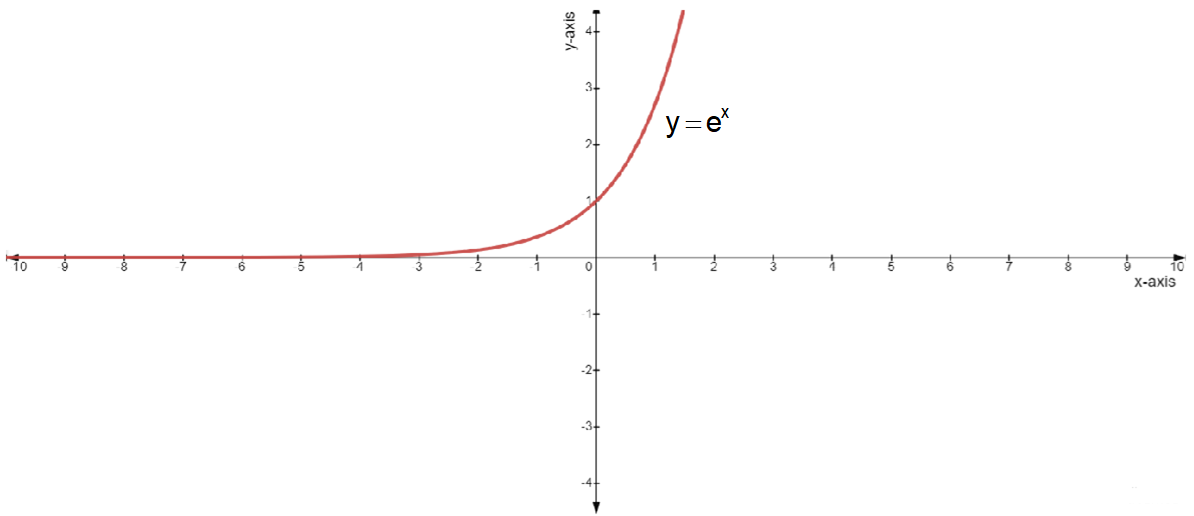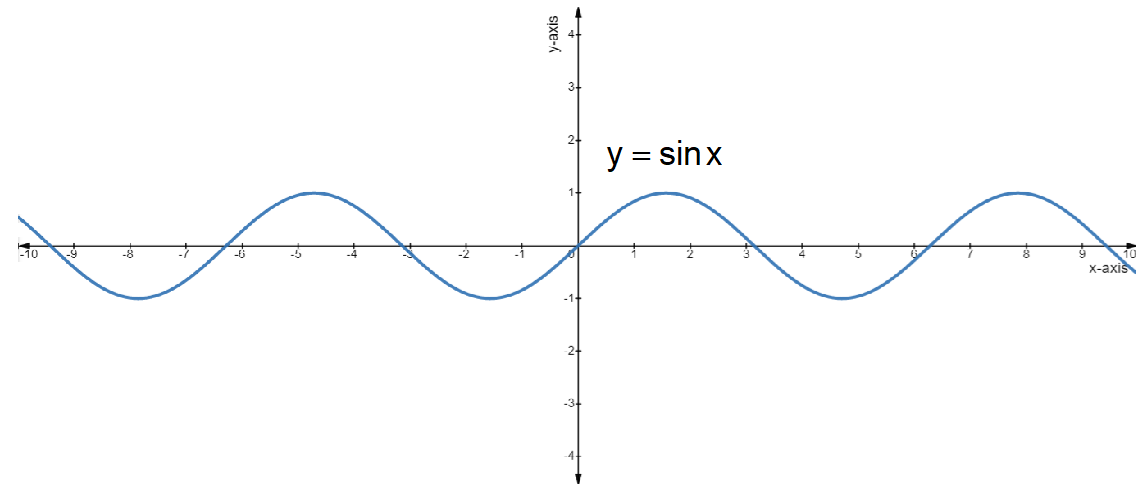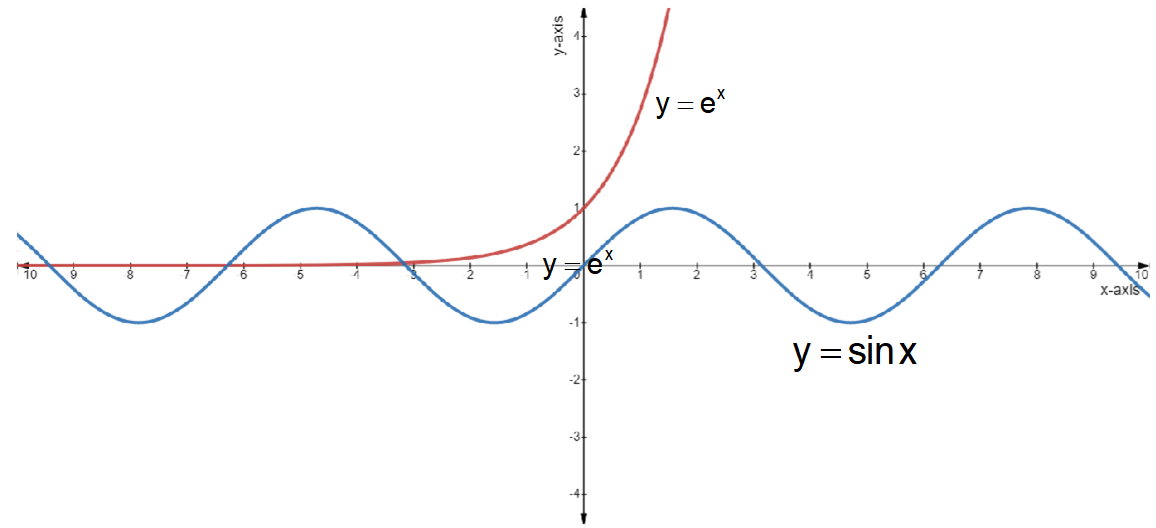
The number of solutions of \[y = {e^x}\] and \[y = \sin x\] is:
A. \[0\]
B. \[1\]
C. \[2\]
D. Infinite
Answer
219k+ views
Hint: In this question, we need to find the number of solutions of \[y = {e^x}\] and \[y = \sin x\]. For this, we need to draw the graphs of these two equations. We can determine the number of solutions based on the number of intersecting points of two graphs.
Complete step-by-step answer:
Consider first \[y = {e^x}\]
Let us plot its graph.

Image: Graph of \[y = {e^x}\]
Now, let us plot the graph of \[y = \sin x\].

Image: Graph of sinx
Now, we will combine these two graphs into one graph for finding a number of intersecting points.
Consider the following combined graph of \[y = {e^x}\] and \[y = \sin x\].

Image: Combined graphs of \[y = {e^x}\] and \[y = \sin x\]
Here, we can say that there are infinite numbers of intersecting points of two curves.
That means, there are an infinite number of solutions for the curves \[y = {e^x}\] and \[y = \sin x\].
Therefore, the correct option is (D).
Additional Information: Sine waves or sinusoidal waves are graphs of functions defined by \[y = \sin x\]. Take note of how the graph tends to repeat itself while you start moving along the x-axis. Periods are the iterations of this regular repeating. Here, the interesting part is the graph of every exponential function that passes through the point (0, 1). Also, such graphs are continuous and increasing. The domain of the graph of an exponential function is the set of all the real numbers.
Note: Here, students generally make mistakes in drawing graphs. Thus, they may get the wrong result. Here, it is necessary to combine both the graphs in one graph to visualize infinite intersecting points of two curves in a better way.
Complete step-by-step answer:
Consider first \[y = {e^x}\]
Let us plot its graph.

Image: Graph of \[y = {e^x}\]
Now, let us plot the graph of \[y = \sin x\].

Image: Graph of sinx
Now, we will combine these two graphs into one graph for finding a number of intersecting points.
Consider the following combined graph of \[y = {e^x}\] and \[y = \sin x\].

Image: Combined graphs of \[y = {e^x}\] and \[y = \sin x\]
Here, we can say that there are infinite numbers of intersecting points of two curves.
That means, there are an infinite number of solutions for the curves \[y = {e^x}\] and \[y = \sin x\].
Therefore, the correct option is (D).
Additional Information: Sine waves or sinusoidal waves are graphs of functions defined by \[y = \sin x\]. Take note of how the graph tends to repeat itself while you start moving along the x-axis. Periods are the iterations of this regular repeating. Here, the interesting part is the graph of every exponential function that passes through the point (0, 1). Also, such graphs are continuous and increasing. The domain of the graph of an exponential function is the set of all the real numbers.
Note: Here, students generally make mistakes in drawing graphs. Thus, they may get the wrong result. Here, it is necessary to combine both the graphs in one graph to visualize infinite intersecting points of two curves in a better way.
Recently Updated Pages
In a game two players A and B take turns in throwing class 12 maths JEE_Main

The number of ways in which 6 men and 5 women can dine class 12 maths JEE_Main

The area of an expanding rectangle is increasing at class 12 maths JEE_Main

If y xxx cdots infty then find dfracdydx A yxy 1 B class 12 maths JEE_Main

Chemical Properties of Hydrogen - Important Concepts for JEE Exam Preparation

JEE General Topics in Chemistry Important Concepts and Tips

Trending doubts
JEE Main 2026: Application Form Open, Exam Dates, Syllabus, Eligibility & Question Papers

Derivation of Equation of Trajectory Explained for Students

Hybridisation in Chemistry – Concept, Types & Applications

Understanding the Angle of Deviation in a Prism

Understanding Collisions: Types and Examples for Students

Understanding Atomic Structure for Beginners

Other Pages
JEE Advanced Marks vs Ranks 2025: Understanding Category-wise Qualifying Marks and Previous Year Cut-offs

How to Convert a Galvanometer into an Ammeter or Voltmeter

Understanding Centrifugal Force in Physics

JEE Main Marking Scheme 2026- Paper-Wise Marks Distribution and Negative Marking Details

Degree of Dissociation: Meaning, Formula, Calculation & Uses

Understanding Electromagnetic Waves and Their Importance




